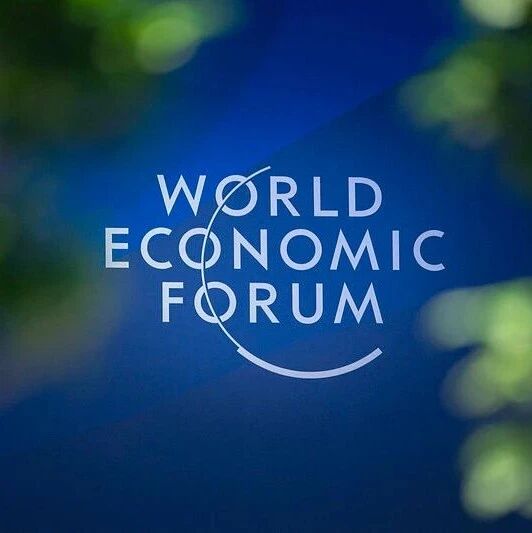

Buy now, pay later (BNPL) is driving online shopping, and financial education must keep pace with the rapid advancements in fintech innovation.
Image source: Getty Images/iStockphoto/DisobeyArt
Morgan Camp
Coordinator of the World Economic Forum's Center for Financial and Monetary Systems
In recent years, buy-now-pay-later (BNPL) services—allowing people to purchase goods on installment plans—have rapidly gained popularity.
However, recent news reports highlight that, amid economic downturns, consumers are finding it increasingly difficult to repay their BNPL debts.
Due to the lack of financial education, the emergence of these new consumption patterns is outpacing how quickly people are learning to manage their finances.
In today’s world, the interface of financial technology is dazzling—users can now make payments with just a single click, making it easier than ever to buy things they can’t afford. According to recent reports, even avoiding payment for purchased items has become more effortless than ever before. Yet, the real issue isn’t “quick credit” itself—it’s that we’ve never truly learned how to manage credit responsibly.
Klarna, a pioneer in buy-now-pay-later (BNPL) lending services, enables consumers to purchase goods in installments. Recently, however, Klarna reported $136 million in credit losses as customers struggled to keep up with repayments. This financial technology company’s groundbreaking promise of "financial flexibility and convenience" now clashes sharply with a reality we’ve come to know all too well: when innovation outpaces people’s understanding, challenges—and in this case, a surge in debt—can quickly multiply.
These losses not only pose significant challenges for Klarna, which boasts over 100 million users, but also highlight a broader symptom of global financial culture: consumers becoming increasingly vulnerable due to a lack of guidance. From burritos to streaming services, as people increasingly turn to installment plans to purchase a wide range of goods, this solution—originally designed as an alternative to credit cards—has quickly evolved into the default payment method for everyday spending. While digital payments offer seamless convenience, their multifaceted impact on consumers' financial health is far from smooth or straightforward.
So, in an economy designed for "seamless consumption," how can we build greater financial resilience? The answer is simple: start with financial education.
The Global Rise of Hidden Debt
The issue of hidden debt isn’t limited to just one company or country. Data suggests that this is a broader and increasingly worrying trend.
For instance, the World Economic Forum’s Global Retail Investor Survey reveals that nearly one-third of respondents are struggling to meet their current financial obligations. Meanwhile, one-fifth of respondents identified debt repayment as one of their top three financial priorities.
This isn’t just an individual’s misjudgment—it’s a systemic lack of financial education we’re witnessing: the pace at which new consumption patterns are emerging is outpacing people’s efforts to learn how to manage their finances effectively.
The lesson we learn from this is that BNPL or other innovative financial products aren’t inherently harmful. For many users, these solutions have provided much-needed flexibility. However, innovation without adequate financial education can leave people vulnerable. If we want to ensure long-term economic stability for everyone, we must align the culture of financial innovation and access with a broader "financial readiness" mindset.
Cultivating a "Financially Ready" Culture
We can’t hit the road until we’ve learned how to drive, yet before diving into personal finance, we don’t take the same kind of preparation. In today’s financial world, we should have already mastered the art of mapping out our financial journey—before even stepping onto it.
Extensive financial education opportunities—particularly in areas like budgeting, saving, and responsible borrowing—are crucial for helping people escape the debt trap, yet these resources often fall short at the most critical moments. As spending becomes easier than ever before, providing ongoing guidance that equips individuals with essential financial literacy skills has become indispensable.
Responsibility doesn’t rest solely with consumers—both fintech services and traditional financial institutions can take action. Technology can help overcome key barriers while making financial education more affordable and accessible. This, in turn, empowers consumers to better prepare for the less glamorous aspects of BNPL "buy now, pay later" options.
For example, each BNPL platform can provide simple and intuitive guidance on repayment timelines, budget considerations, and potential risks—right before the user confirms a purchase. Meanwhile, traditional financial products like bank accounts or investment portfolios could integrate multiple features, such as goal-based planning tools, personalized savings recommendations, and clear explanations of fees and risks, turning every transaction into an "educational moment." Similarly, schools could prioritize modern financial literacy education just as they do with other core subjects.
Policy makers can drive the establishment of transparency and fairness design standards. As highlighted in the forum’s "Global Retail Investor Outlook," effective policies not only encourage innovation but also provide people with essential protections, equipping them with the tools needed to confidently manage their finances.
As the younger generation in our increasingly digital economy comes of age, this task has become particularly urgent. Today, consumers aged 18 to 24 are already more likely than previous generations to rely on installment payment services—often not out of impulse, but out of necessity. Yet without complementary financial education, this "necessity" could easily turn into a debt trap that takes years—if ever—to escape.
The Next Wave of Financial Innovation
The next wave of financial innovation shouldn’t focus solely on speed, personalization, or convenience—but should instead place greater emphasis on understanding.
In building this "financially ready" culture, we all have a role to play. If we want consumers to "pay later," we need to help them get prepared—right now. And when shopping can be as simple as "one-click," initiatives promoting financial education must move just as swiftly.

The above content solely represents the author's personal views.This article is translated from the World Economic Forum's Agenda blog; the Chinese version is for reference purposes only.Feel free to share this in your WeChat Moments; please leave a comment at the end of the article or on our official account if you’d like to republish.
Translated by: Di Chenjing | Edited by: Wang Can
The World Economic Forum is an independent and neutral platform dedicated to bringing together diverse perspectives to discuss critical global, regional, and industry-specific issues.
Follow us on Weibo, WeChat Video Accounts, Douyin, and Xiaohongshu!
"World Economic Forum"


